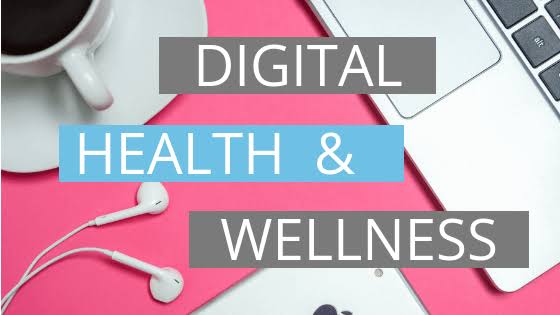The state of one’s physical and mental health in the Digital age is referred to as digital wellness. Digital wellness, more precisely, refers to preventative interventions aimed at monitoring and promoting the safe use of technology.
What Is Digital Wellness and Why Is It Important?
If technology progresses and we spend more time online, society will have to adapt and deal with the consequences of digital addiction.
New “digital health” features have recently been pushed into the services of major tech companies. Consumers must be mindful of how much time they spend on their devices or phone as part of the digital health movement. Fortunately, there are a few tools at your fingertips to help you get started.
Technology is incredible. It has enabled amazing advancements in communication, medicine, architecture, industry, transportation, and safety. It has raised new viewpoints, shortened gaps between friends, and posed and answered new questions about access and opportunity and when you use it, we worry for your health and safety.
Consider it in terms of physical health: what are you eating? What are you focusing your efforts on? Are you an aggressive or passive person? How are you balancing work and play on your phone, and is it working for you? Are you surrounded by people who make you feel good and promote healthy habits?
Depression and Mental Health Issues:
You could be at risk of other health issues, hacking, abuse – or worse – depending on how much time you spend online, whether on social media, browsing comments, updating your device, or studying.
Activate your Digital Wellness:
With this in mind, the Division of Student Life collaborated with campus partners to develop this toolkit to assist you in resetting your digital wellness. Take a few minutes to learn how your digital lifestyle could be impacting your academic and personal success – in some unexpected ways – and to learn basic techniques for cutting through the noise, using media more mindfully, and getting a lot more fun out of your life – both online and offline.
It’s Time to Evaluate Digital Wellness:
It’s all too convenient to begin our days in the same way we end them: staring at a computer. Most of us do some variation of this—after all, we’re just human, and technology is built to addict us—and as it pervades virtually every part of our lives, it’s worth taking a close look at our digital wellness.
Our mental, physical, emotional, and spiritual well-being are inextricably linked to our digital health and wellness. And, like all aspects of our wellness, it can fluctuate and lead to illness.
Tips and Resources to Help You Use The Technology More Effectively:
- Turn off all alerts on your devices.
- Make use of Screen Time and Downtime.
- Become extremely coordinated. Put the apps you want to use less of in folders on your computer, aim for inbox zero if possible, and become meticulous about your desktop. Keep your files and directories correctly named, and your brain will thank you.
- Feeling secure and relaxed on the internet is also a vital element of digital health, so develop good habits! Passwords should be changed regularly, inactive accounts should be deleted, and you should be cautious about who and what you send your most sensitive information to.
How do digital technologies help with wellness?
We can also make our gadgets work for us. Here are a few examples of how you can use technology to encourage wellness:
Video chat allows you to see and speak with friends and family from afar. Maintain such relationships even though distance separates you.
Participate in social media to stay in touch with friends, former coworkers, or new acquaintances with whom you would otherwise lose contact.
Use applications that are specifically intended to promote good health, such as Calm for meditation and relaxation. Google’s latest Digital Wellbeing software is specifically developed to address the issue of digital health.
How will organizations profit from supporting digital health?
The majority of the issues that individuals face in the digital world often impact businesses.
It is now critical that they consider how to promote digital wellbeing among employees. As it happens, digital wellness and conventional wellness will coexist because both are usually focused on having people take time away from burdensome tasks and distractions and concentrate on their physical and mental health.
Organizations must balance the need for digital wellness with the cost to maintain a return on investment. According to Corporate Wellness Magazine, developing an accessible digital wellness curriculum entails using science-based health tests to teach participants how to take incremental steps that contribute to long-term improvement.
The disadvantages of the digital age:
Among the issues that many digital technology consumers are dealing with these days are:
Mental fogginess: Spending too much time on the phone before bed will cause our minds to become overly wired, making it difficult to fall asleep. Phone notifications in the middle of the night will interrupt our sleep.
Reduced intelligence level: Our technology continuously draws our attention in different directions, making it difficult to concentrate. We know we should be focusing on work or family time, but our eyes are drawn to our phones to check text messages or to our Facebook pages to see what our friends are up to.
Communication breakdown with others around you: How many times have you gone out to dinner with a friend only to have them disappear into their phone? (And how many times have you done the same thing)? Our digital addiction will certainly wreak havoc on our relationships and prevent us from forming deeper real-life connections.
Finally, one of the most important things you can do for your digital wellbeing is to block, unfollow, and hide when necessary. Follow only those that make you feel balanced, aware, activated, encouraged, and driven. When you have the opportunity, commit to being one of those people.
What are your favorite ways to stay digitally fit? Click here: https://novelcoworking.com/blog/what-is-digital-health-and-wellness-and-why-is-it-important/

